- Kenneth Noland (b. 1924)
- Steven Parrino (b. 1958)


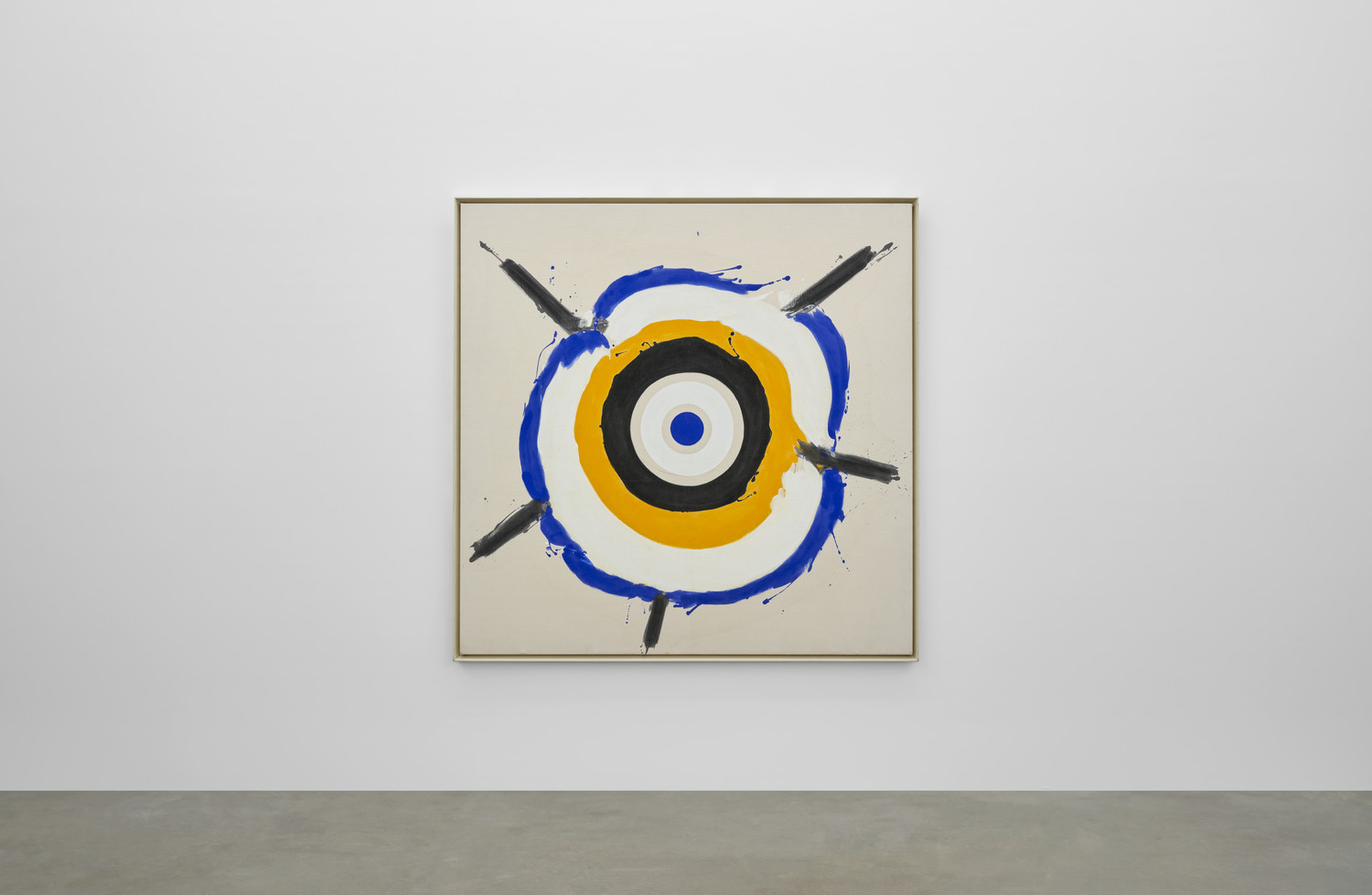
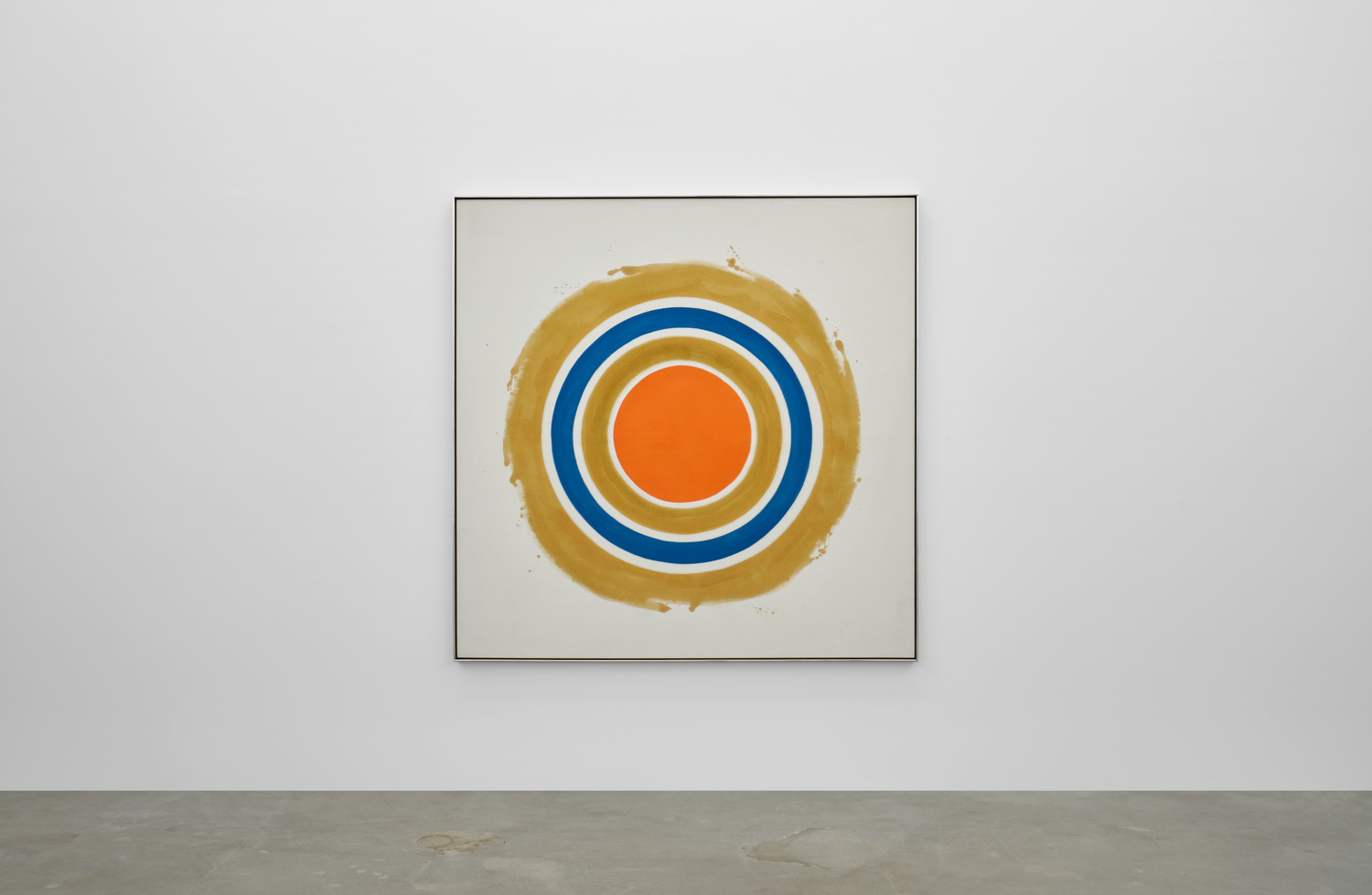
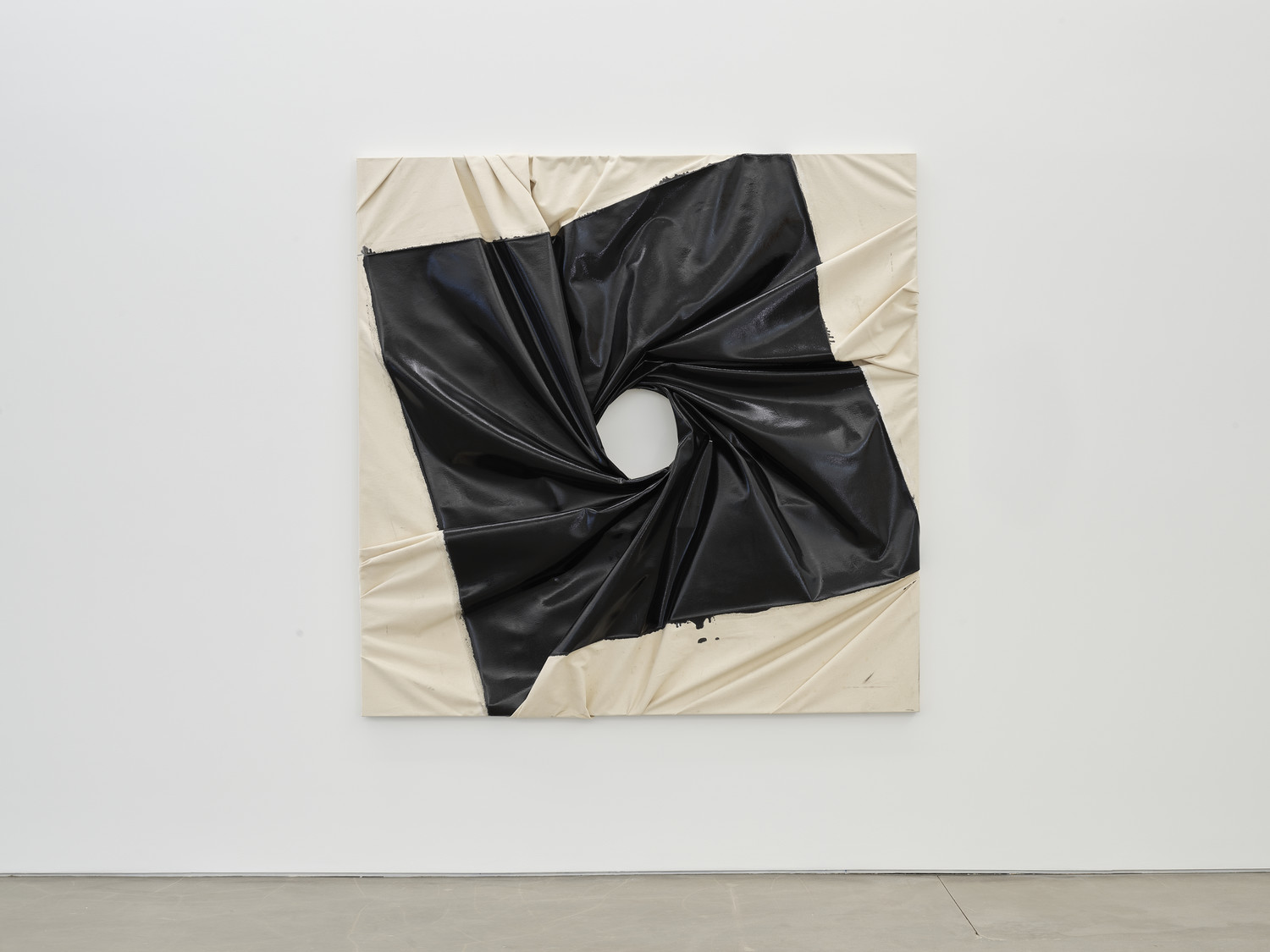
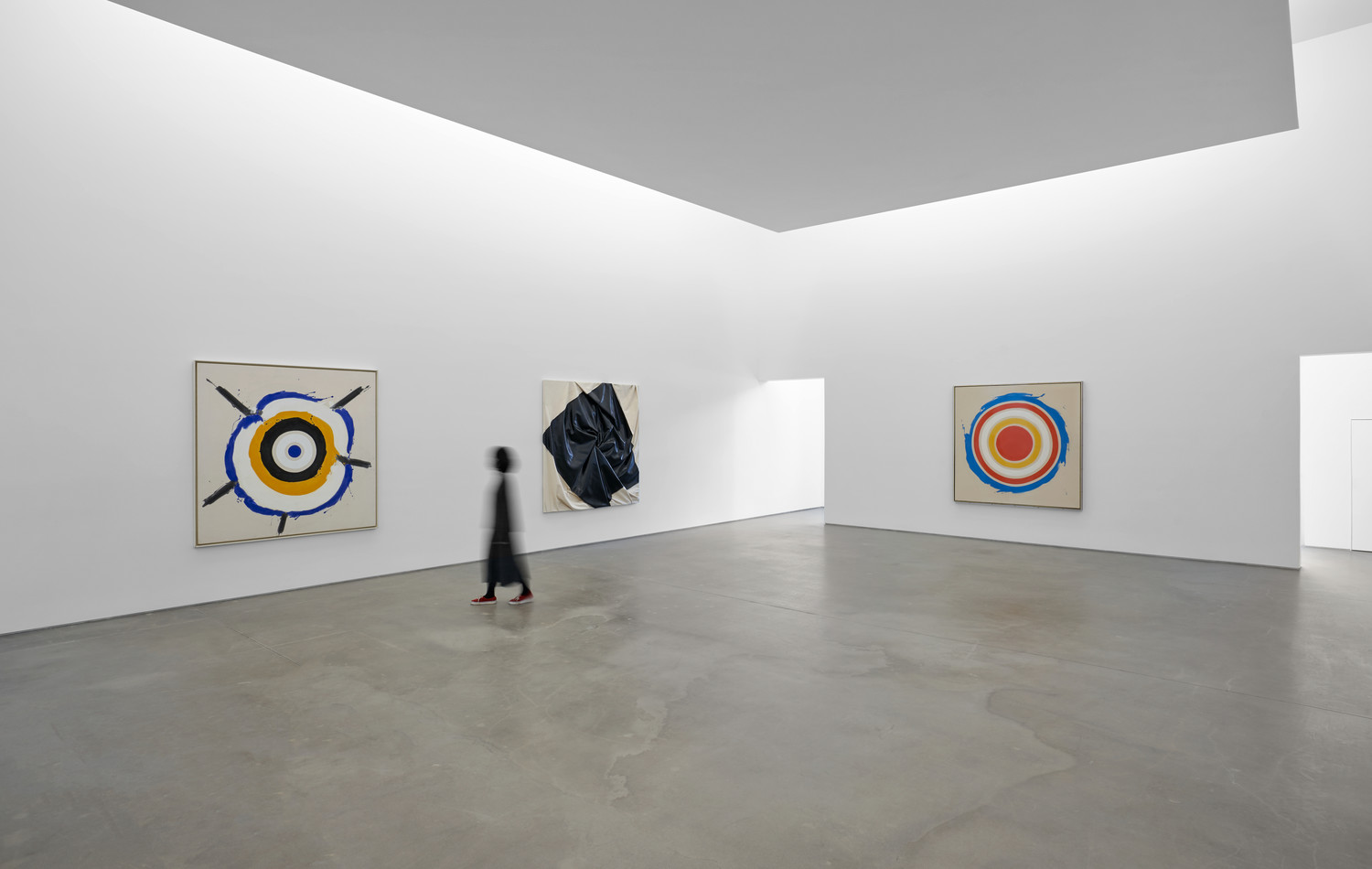
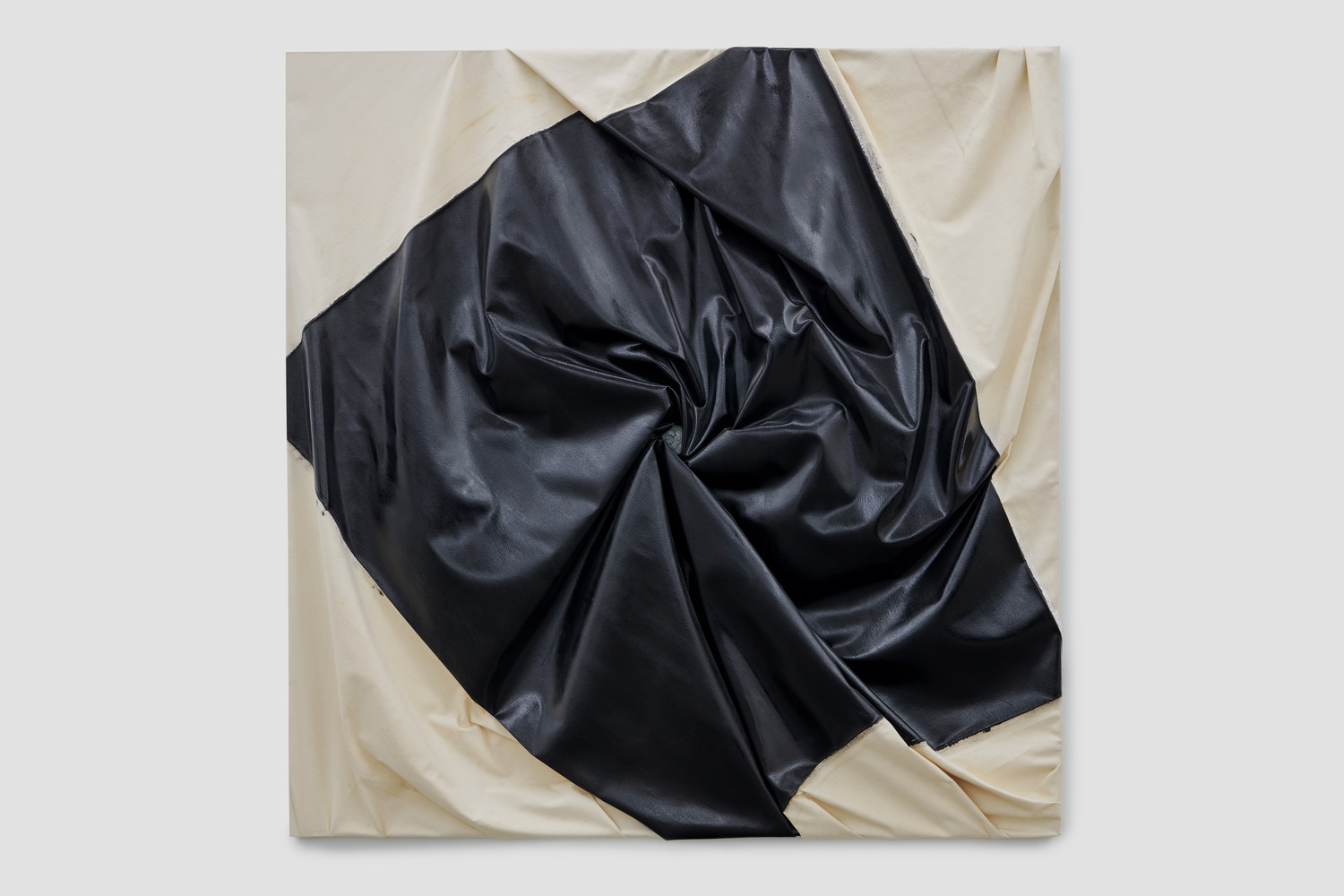

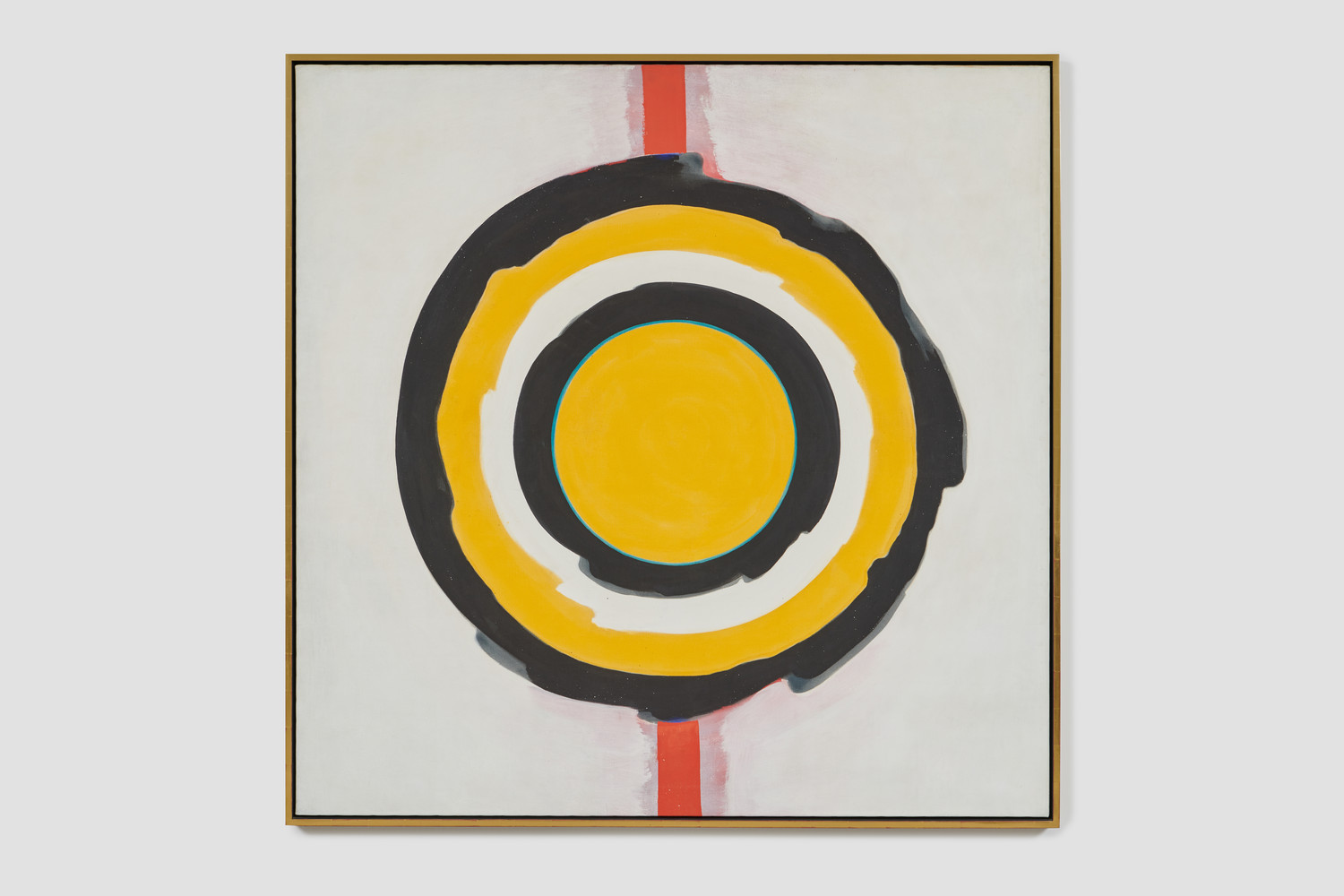
Maison d'Art is pleased to announce a presentation of works by Kenneth Noland and Steven Parrino. The exhibition features Kenneth Noland’s circle paintings of late 1950s through early ‘60s alongside Steven Parrino’s misshaped paintings of the 1990s and 2000s.
This adventurous pairing shows two artists at the height of their creative powers exploding formal restraint in order to explore the philosophical conditions at the heart of painting. Radiating from the center of unprimed canvases, Noland’s iconic circle paintings fuse the bold palette of Pop Art with the process-based methodology of post-painterly abstraction. These are paired with Steven Parrino’s works from a half-century later. Thrumming with radical energy, these works reflect back on a long century of abstract painting with relentless intelligence.
In Noland’s Circle Paintings (starting 1956) the circle is not a figurative, geometric or optical, but a subject that stands as a single expressive entity. Noland subsumes Jackson Pollock’s method of appearing to work from the center out and working around the canvas. He subsumes Claude Monet’s open rippling strokes as impressions of light and water and Paul Cezanne’s use of color patches and enclosures. He subsumes Orphism and Synchromism of the 1910s, where circles of specific colors swirl together. Noland takes these references in art history and rounds them up in circles towards a practice of emphasis and liberation of colors.
Noland participates in the process of clarification in modern painting by floating his circles and working outwards to a true direct immediacy and unification of content, format and subject matter. He retains the scale and physical immediacy of Abstract Expressionism and then develops an open gestural performance by directly staining unprimed and unsized canvas with emphasis on color. Fete (1959) and Extent (1959) show loose outer and inner circles and strokes and shapes that are contingent to, or independent of the circles that retain the painterliness gesture of Abstract Expressionism.
Steven Parrino also works with unprimed canvas intimately by actually physically shaping the canvas to preserve the proximity of material to content. Peel Out (2000) and Spin-Out Vortex (Black Hole) (2000) are visual metaphors of a “spin-out motion” from the traditional idiom of painting. The circular void in Spin-Out Vortex (Black Hole) and the placement of a metal object in the center of Peel Out are both tributes to Modernism and performative actions that lend additional dynamism and disruption to then-celebrated formalist and historical traditions of flatness of a canvas.
Influenced by Noland’s practice, Parrino adds another element to the unification of content and subject: process. His direct handling of the materials, the canvas itself, context, subject and the decisive process reflect a reality and manifest the artist. Parrino states that he is “interested in how factuality and subjectivity exist within total abstraction.” Parrino’s misshaped paintings refer to Suprematism, the all-encompassing aspect of the Baroque, and the process-based Conceptualism of Robert Smithson. Like Noland, he neutralizes the layout, the shape and composition that visually generate force, but with his use of solid monochrome colors to blur distinctions between image and object.
Noland described his circle paintings as such:
“It’s anti-gravitational painting ... There is no feeling of left to right or up and down...The early circles used to disturb people because they looked like objects floating in deep space.”
The “deep space” is an element that Parrino constantly emphasizes in his practice whether it’s creating vortexes by manipulating the surface of the canvas or sketching black holes from space. Parrino continues to explore the relationship between death and space, the conscious and the unconscious, illusion versus reality. In a time of deaths, end of new movements, Noland and Parrino transgress and disrupt traditions, including that of Clement Greenberg’s and his celebration of flatness. Noland works towards the liberation of color in the time of Abstract Expressionism, whilst Parrino towards freedom and equality of “painting” in the context of Greenberg’s formalism.
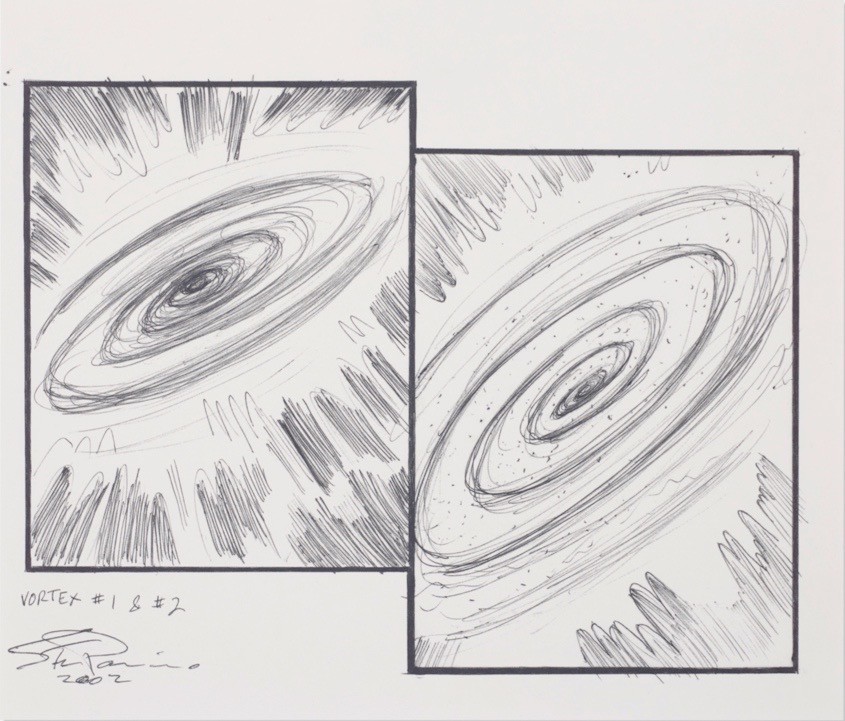
Steven Parrino, Vortex #1 & #2, 2002, Offset lithograph on cardstock, 8 ¼ × 9 ¾ inches (21 × 24.8 cm)